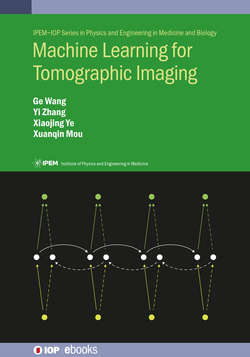Читать книгу Machine Learning for Tomographic Imaging - Professor Ge Wang - Страница 12
На сайте Литреса книга снята с продажи.
0.1 Artificial intelligence/machine learning/deep learning
ОглавлениеCurrently, deep learning is the mainstream approach of machine learning (ML), which is arguably the hottest research area of artificial intelligence (AI). AI/ML means allowing a computer to think like a human and even outperform humans in certain (if not most) important tasks. While classic science and technology are really about the magnification of humans’ physical power (such as steam engines and assembly lines) and the enhancement of non-intelligent functions (such as cars and planes as our legs, and microscopes and telescopes extending our eyes), AI/ML targets the understanding and prototyping of human intelligence so that we not only demystify the ultimate secret of life but also let machines work for us intelligently (figure 0.2).
Figure 0.2. Curiosity and needs drive scientific pursuits through the industrial, information, and intelligent revolutions.
Over only the past few years, AI/ML techniques have achieved impressive successes in computer vision, image analysis, speech recognition, language processing, and many other areas. A major feature behind these successes is that they use deep artificial neural networks trained with big data. An artificial neural network consists of many artificial neurons. Such neurons are basic data processing units performing a linear (weighted sum) operation followed by a simple nonlinear (thresholding) operation. This was inspired by how a biological neuron works. A biological neuron accumulates multiple stimuli, and when the overall stimulation is over a threshold, the neuron will become excited and respond by sending an electrical signal to other neurons or cells. There are a huge number of biological neurons in our brain, and it is the biological neural network that gives us intelligence, and the unmistaken example showing that intelligence is feasible. Similar to this biological/neurological system, an artificial neural network can behave, to a good degree, like a brain, if the number of artificial neurons is high enough, organized deeply (i.e. with many layers of artificial neurons), and trained well with big data. This resembles the learning process in our childhoods, where our neurological connections are formed adaptively, and we become increasingly intelligent.
The importance and potential of AI/ML has now been well recognized. The AI Executive Order was issued by the White House in February 2019 (https://www.whitehouse.gov/articles/accelerating-americas-leadership-in-artificial-intelligence/), and the response from NIST is also inspiring to read (https://www.nist.gov/topics/artificial-intelligence). International competition is remarkable in advancing AI/ML theory and technologies (figure 0.3).
Figure 0.3. Web of Knowledge results with ‘deep learning’ as the topic term (data collected on 11 July 2019).
